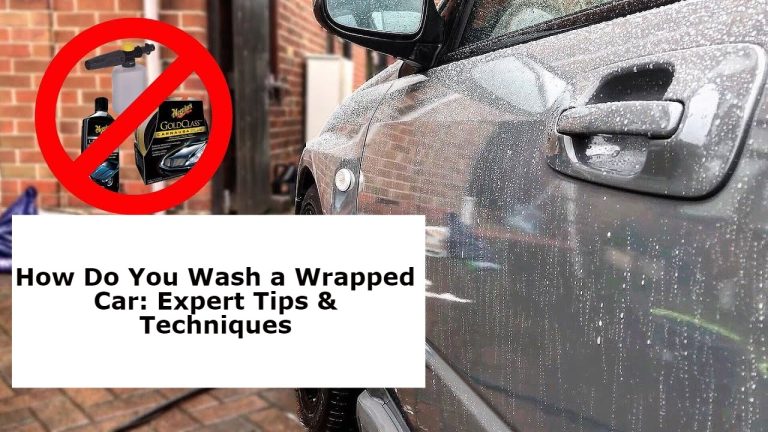Do You Need to Fill The Oil Filter Before Installing
There is a lot of discussion and debate over whether or not you should fill your car’s oil filter before installing it. Some people swear by this technique, while others say it’s not necessary. So what’s the truth? Should you fill your oil filter before installation? Let’s take a closer look at the pros and cons of this practice to help you make an informed decision.
What is an oil filter and what does it do?
An oil filter is a vital component of your car’s engine. It is responsible for removing impurities from the oil as it circulates through the engine. This helps to keep the engine clean and running smoothly. Over time, the oil filter will become clogged with dirt and debris, which can reduce its effectiveness. When this happens, it’s important to replace the filter to ensure that your engine is getting the clean oil it needs.
The Debate: To fill or not to fill?
As we mentioned, there is a lot of debate over whether or not you should fill your oil filter with oil before installing it. The main argument for filling the filter is that it will help to prevent dry starts. A dry start occurs when the engine is started without enough oil in the system, which can cause damage to the engine. Proponents of filling the filter say that by adding oil to the filter before installation, you can help to prevent this from happening.
On the other hand, some people argue that filling the filter is not necessary. They say that the filter will be filled with oil as soon as the engine is started, so there is no need to pre-fill it. Additionally, they argue that there is a risk of overfilling the filter, which can cause problems.
So What’s the Verdict?
At the end of the day, it’s up to you whether or not you fill your oil filter before installation. If you’re concerned about dry starts, then filling the filter may give you peace of mind. However, if you’d prefer not to fill it, that’s okay too. As long as you make sure that the filter is properly installed and the engine has enough oil, you should be good to go.
Why you should always fill the oil filter before installing
There are a few good reasons why do you need to fill The oil filter before installing it. First, as we mentioned, doing so can help to prevent dry starts. If the filter is filled with oil before installation, then the engine will have a ready supply of oil as soon as it’s started. This can help to protect the engine from damage.
Another reason to fill the filter is that it can help to extend the life of the filter. When a filter is used for an extended period of time without being replaced, the oil can become clogged with dirt and debris. This can reduce the filter’s effectiveness and cause it to fail prematurely. By filling the filter with oil before use, you can help to flush out any contaminants that may be present. This can help to prolong the life of the filter and keep your engine running smoothly.
How to fill an oil filter with oil
If you’ve decided that you want to fill your oil filter with oil before installation, there’s a simple way to do it. First, remove the old filter from the engine. Then, unscrew the cap on the new filter and add a small amount of oil (about a cup or so). Once the filter is full, screw the cap back on and install the filter in the engine. That’s all there is to it!
Tips for avoiding common mistakes when filling an oil filter
Following these tips, you can help to ensure that your oil filter is filled properly and that your engine is protected from damage.
★ Use the correct oil: Be sure to use the correct type of oil for your car. Using the wrong oil can cause damage to the engine.
★ Don’t overfill: It’s important not to overfill the filter. If too much oil is added, it can cause problems.
★ Be careful when removing the old filter: When removing the old filter, be careful not to spill any oil. Oil can be difficult to clean up and it can damage the engine if it’s not removed properly.
★ Make sure the filter is installed correctly: Once the filter is filled with oil, be sure to install it correctly. If it’s not installed properly, it can cause leaks and other problems.
★ Check the level of oil: After changing the filter, be sure to check the level of oil in the engine. If it’s low, add more oil as needed.
★ Check for leaks: After the filter is installed, be sure to check for leaks. If you see any oil leaking from the filter, it needs to be replaced.
FAQs about filling and installing oil filters
Q: Do I need to fill the oil filter before installing it?
A: It’s up to you. Some people argue that filling the filter is not necessary, while others say that it can help to prevent dry starts and extend the life of the filter.
Q: How do I fill an oil filter with oil?
A: It’s easy! Just unscrew the cap on the new filter and add a small amount of oil (about a cup or so). Once the filter is full, screw the cap back on and install the filter in the engine.
Q: What are some tips for avoiding common mistakes when filling an oil filter?
A: Be sure to use the correct type of oil, don’t overfill the filter, and be careful when removing the old filter. Also, make sure the filter is installed correctly and check for leaks after installation.
Q: What happens if I don’t fill the oil filter before installing it?
A: If you don’t fill the oil filter before installing it, the engine may run dry and suffer damage as a result.
Q: What happens if I fill the oil filter with too much oil?
A: If you add too much oil to the filter, it can cause problems. The excess oil can leak out and damage the engine.
Q: How do I know how much oil to add?
A: Generally, you’ll want to add about a cup or so of oil. Be sure not to overfill the filter, as this can cause problems.
Q: Which way does oil flow through oil filter?
A: The oil flows through the filter in a clockwise direction. As the engine runs, the oil is pumped through the filter and traps any contaminants that may be present.
Q: Is oil filter before or after pump?
A: The oil filter is located after the oil pump. The pump pulls the oil from the pan and pushes it through the filter. The filtered oil then flows to the engine.
Q: Do I need to replace my oil filter every oil change?
A: Not necessarily. Depending on the type of filter you have, you may be able to clean and reuse it. However, it’s generally recommended that you replace the filter every few oil changes to be safe.
Conclusion
Filling and installing an oil filter is a fairly simple process. However, there are a few things to keep in mind to avoid common mistakes. Be sure to use the correct type of oil, don’t overfill the filter, and be careful when removing the old filter.
Also, make sure the filter is installed correctly and check for leaks after installation. This guide will help to ensure that your oil filter is filled properly and that your engine is protected from damage.







